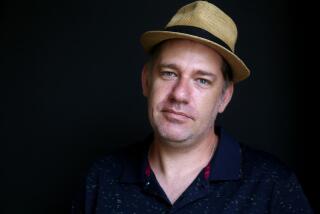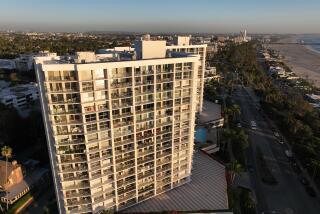Selig Undaunted After Selling His Seattle Skyscraper
- Share via
When maverick Seattle skyscraper developer Martin Selig fell behind on his light bill last winter, his competitors figured that he might be in trouble. And when nearly $1 million in mortgage checks on five of his buildings bounced this summer, they were pretty well convinced.
But by mid-October, Selig was back in the black, although he was no longer literally on top of this city’s hot commercial real estate market. He solved his cash problems by agreeing to sell Seattle’s tallest building, the 76-story Columbia Seafirst Center, for $354 million.
The sale was the latest twist in the unlikely saga of a controversial 52-year-old businessman who started with nothing and who remains, even after the deal, Seattle’s biggest property holder.
The sale of the skyscraper to tenant Seafirst Corp., a subsidiary of BankAmerica Corp., was the biggest real estate sale in Washington state history. The 986-foot building was the tallest on the West Coast when it was completed in 1985, although the First Interstate Tower in Los Angeles later topped it by 73 feet.
Selig’s practiced positivism was in full bloom after the sale. “The sale of this building is not a setback, it is a phenomenal victory,” he proclaimed.
After all, he reasoned, the sale price is $102 million more than the mortgage he holds. Just starting construction of the 1.5-million-square foot building in a city Seattle’s size was “a significant risk,” Selig said, and now it must be viewed as a winning gamble.
But the necessity of selling, caused by depressed rents from a temporary glut of new skyscrapers, has to hurt. Selig once called the 10-year process to plan, build and fill the tower “an Olympian feat.”
“The Space Needle told people where Seattle was,” he once remarked. “Columbia Center tells people Seattle has arrived.”
“I don’t think there is another building of this size in the world owned by an individual,” Selig boasted when the tower was completed.
A flurry of new buildings from competitors forced Selig to keep his rents down at Columbia Center and at his other buildings, and postpone his bills. At one point he owed $640,000 to Seattle City Light for electricity, since paid.
Both Selig and his skyscraper remain controversial. Critics have charged that the black-glass, curved edifice is out of scale with Seattle and that several other Selig buildings are too derivative of Houston-style architecture. The tower and the swank private club that Selig installed at the top was a project driven by ego instead of civic need, they sniped.
Citizen activists who preferred the days when the horizon was dominated by Mount Rainier launched a campaign that resulted in new city zoning that makes it impossible to build a skyscraper as high as Columbia Center again. This year, voters also approved a lid on future downtown office construction.
Enthusiasts, however, think that the spire nicely punctuates a newly cocky skyline in a city trying to cash in on Pacific Rim trade.
Selig, an avid collector of modern art, said of his buildings: “You have to look at them as sculptures.”
“It was an opportunity,” Selig said of the building code in force in the late 1970s. “I wanted to build the maximum building I could build at that time.”
The present cap, he said, could make existing buildings more valuable but may hurt future downtown growth.
The sale of the skyscraper has also provoked controversy. It was assessed for tax purposes at only $195 million. The big price tag in Seattle’s hot real estate market has prompted county officials to propose recalculating assessments of all commercial and residential properties.
Turmoil is nothing new to Selig. He and his parents emigrated to the United States in 1940 as Jewish refugees from Nazi Germany, when he was 3 years old.
His drive was apparent early. Shortly before the 1962 Seattle World’s Fair, he gave construction workers some Space Needle sweat shirts that he was hawking in return for a ride to the top of the new landmark. And he bought his first commercial property while a student at the University of Washington. He borrowed part of the down payment and sold the property a year later for a good profit.
With aggressive borrowing, attention to construction details and personal service to tenants, he has averaged about one new building per year since the mid-1960s.
The result is a local empire of big office buildings that he puts in “the high 20s” with an assessed value of more than half a billion dollars. Observers believe that the true market value of his holdings is at least 50% higher.
But while immensely successful, Selig has remained somewhat aloof from Seattle’s clubby establishment. He keeps a low profile on most civic issues, will not discuss his personal life with the media (he is married with two children) and is reluctant to talk about what makes him tick.
Instead, he concentrates on making Seattle’s profile higher with buildings. “I love Seattle and am pleased to be able to play such an active role in its evolution,” he said in a statement issued with the sale.
Plans are under way for additional Selig buildings of 10, 19 and 36 stories. “We absolutely are still here,” he said.
More to Read
Inside the business of entertainment
The Wide Shot brings you news, analysis and insights on everything from streaming wars to production — and what it all means for the future.
You may occasionally receive promotional content from the Los Angeles Times.








